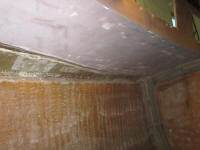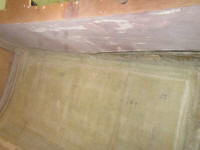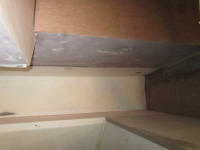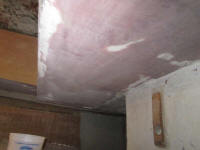
110 Cookson Lane | Whitefield, ME 04353 | 207-232-7600 | tim@lackeysailing.com
I had one more round of sanding on the undersides of the sidedecks and cockpit, to smooth the final application of filler from last time.
Afterwards, with the surfaces smooth and consistent, I applied a fillet to a couple inside corners in the quarterberth area to make for better-looking transitions and corners there. Once that cured, I could complete the final, finish sanding of these areas so they'd be ready for the next steps.
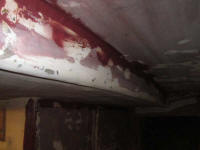

I removed the clamps and braces from the hanging locker area, which had had the whole weekend to cure.
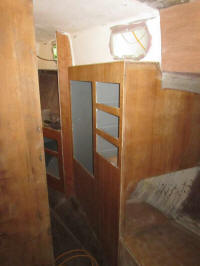
The molded fiberglass overhead liner in the passageway, head, and forward cabin needed some final sanding to prepare it for paint. Much earlier, I'd sanded these areas to remove a molded-in texture and also to remove old paint from some areas. At that time, I'd left various corner and detail areas, where the tools of the day didn't reach, and now I finish-sanded all areas with 80-120 grit on a vibrating sander to remove earlier sanding marks and otherwise prepare these areas for primer and paint, as well as hand-sanding some molded areas of the liner around the bulkheads to prepare them and remove remaining paint.
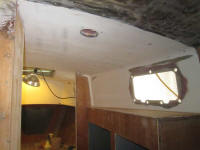
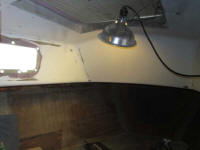
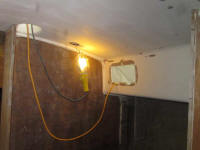
Later, I installed the final piece of cherry plywood paneling for the moment, on the narrow bulkhead in the passageway, across from the hanging locker.
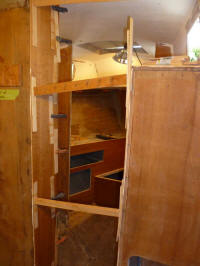
Several surfaces in the main saloon were slated to receive solid cherry paneling: specifically the faces of the four bulkheads defining the saloon itself, including the large main bulkhead, which appearance would set the overall tone for the cabin when complete.
To this end, I received for our consideration three potential paneling samples from a local millshop of the owner's acquaintance. Each sample represented a variation on a theme of traditional beaded paneling, milling of which was beyond the capacity of my own shop, at least in a timely and efficient manner.
The first sample featured a visual plank reveal of 2", but milled from wider stock that incorporated an identical bead detail down its center to maintain the appearance of narrower planks. The sample used a milled tongue and groove joint. These planks were about 5/16" - 3/8" thick.

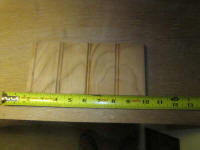
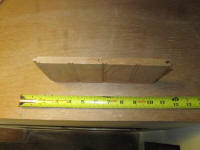
The next sample featured individual planks with a 1-1/2" reveal and an identical bead detail to the two inch planks above, again joined with tongues and grooves. Apologies for the poor quality of many of these photos; my camera appears to be having issues. Later, I switched to another camera, with according increase in photo quality.
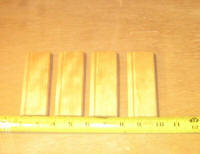
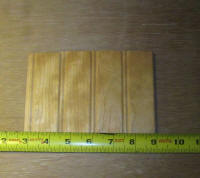
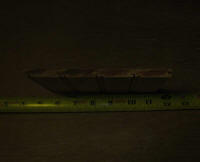
The final sample was similar, yet quite difference in final appearance. Here, the bead detail was more defined, deeper and wider, and the plank reveal was just over 2"; these planks were about 1/2" thick, and incorporated a shiplap joint rather than tongue and groove.
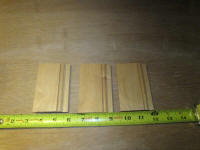

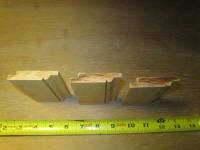
Next, I tacked all three samples up on the bulkhead for comparison and review, dampening the surface with spirits to simulate more accurately their final color.
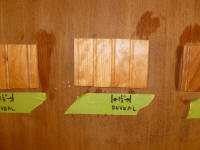
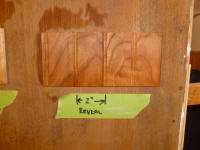
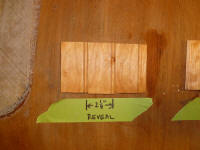
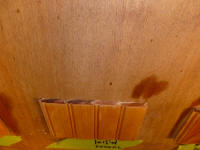
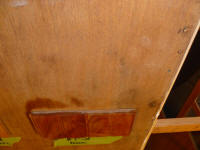

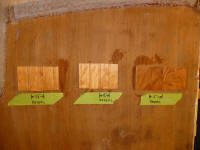
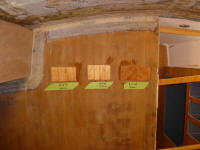
Total Time on This Job Today: 7.75 hours
